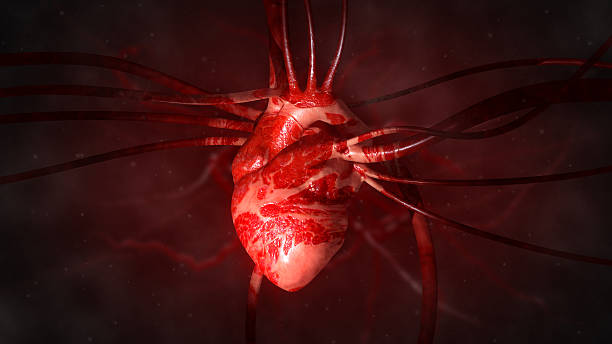Thermodynamics is one of the foundational pillars of physics, a science that explores the relationship between heat, energy, and work. It seeks to understand how energy moves and transforms in the universe, governing everything from the behavior of a boiling kettle to the life cycles of stars. The principles of thermodynamics are universal, applying not only to engines and machines but also to living organisms, atmospheric systems, and even the expanding cosmos itself.
The word “thermodynamics” comes from the Greek roots therme meaning “heat” and dynamis meaning “power.” In essence, it is the study of energy in motion—how heat becomes work, how work becomes energy, and how both are conserved and transformed across systems. The field developed during the Industrial Revolution, born out of practical attempts to improve steam engines, but has since evolved into a profound scientific framework that underpins chemistry, biology, astrophysics, and modern engineering.
Understanding thermodynamics is essential to understanding the physical universe itself. Every physical process—every chemical reaction, every biological function, every mechanical operation—occurs in accordance with the laws of thermodynamics. These laws define not just how energy moves, but also what is possible and impossible in nature.
The Origins and Evolution of Thermodynamics
The origins of thermodynamics lie in the quest for mechanical efficiency. In the early 19th century, engineers sought to understand why steam engines, which converted heat into mechanical work, were so inefficient. This search for understanding gave rise to profound insights about the nature of energy and heat.
Sadi Carnot, a French physicist and engineer, is often considered the father of thermodynamics. In 1824, he published his seminal work Reflections on the Motive Power of Fire, introducing the concept of the idealized heat engine. Carnot showed that no engine could be more efficient than a theoretical one operating between two temperatures, laying the groundwork for the second law of thermodynamics.
James Prescott Joule’s experiments in the mid-19th century established the mechanical equivalent of heat, proving that energy could neither be created nor destroyed but only transformed. This discovery unified the concepts of heat and mechanical work under a single framework—the conservation of energy, which became the first law of thermodynamics.
Rudolf Clausius and William Thomson (Lord Kelvin) expanded on these principles, formalizing the second law and introducing the concept of entropy—a measure of disorder or randomness in a system. Later, Ludwig Boltzmann connected thermodynamics with statistical mechanics, showing that entropy arises from the microscopic behavior of countless particles.
By the late 19th and early 20th centuries, thermodynamics had become a universal science. It guided the development of engines, refrigeration, electricity, and chemical processes, while simultaneously influencing theoretical physics and cosmology. Even Albert Einstein’s theory of relativity incorporates thermodynamic ideas about energy conservation and the equivalence of mass and energy.
The Nature of Energy and Heat
At its core, thermodynamics is concerned with energy—its forms, transformations, and limitations. Energy can manifest as motion, light, electricity, chemical potential, or heat. While the total amount of energy in the universe remains constant, it continually changes form.
Heat is a particular form of energy transfer that occurs due to temperature differences. When two bodies of different temperatures come into contact, energy spontaneously flows from the hotter body to the cooler one until thermal equilibrium is reached. This process reflects a fundamental asymmetry in nature: while mechanical work can be converted into heat easily, converting heat back into work is inherently limited.
Temperature itself is not energy but a measure of the average kinetic energy of particles in a substance. In gases, for example, temperature corresponds to the average speed of molecular motion. However, thermodynamics operates at a macroscopic level—it deals with systems as a whole, without requiring direct knowledge of individual particles.
Heat can move through conduction, convection, or radiation. Conduction involves direct transfer between particles in contact, as in a metal rod heated at one end. Convection involves the bulk movement of fluids, such as air or water currents. Radiation, by contrast, transfers energy through electromagnetic waves, allowing the Sun’s energy to reach Earth across the vacuum of space.
The System and Its Surroundings
In thermodynamics, the concept of a “system” is fundamental. A system is the portion of the universe chosen for study, separated from everything else—the “surroundings”—by a boundary. This boundary can be real or imaginary, fixed or movable, depending on the problem.
Systems can be classified according to how they exchange energy and matter with their surroundings. An isolated system exchanges neither energy nor matter; the universe itself is the ultimate example of such a system. A closed system can exchange energy but not matter, like a sealed pressure cooker. An open system exchanges both energy and matter, such as a boiling pot of water where steam escapes into the air.
This classification is essential because thermodynamic laws describe how energy moves across these boundaries. Whether in a chemical reaction, a biological cell, or a power plant, defining the system properly allows scientists to track energy transformations with precision.
The Zeroth Law of Thermodynamics
Before the first law could even be formulated, a more fundamental principle emerged—the zeroth law of thermodynamics. This law states that if two systems are each in thermal equilibrium with a third system, they are in thermal equilibrium with each other.
This deceptively simple rule provides the foundation for temperature measurement. It means that temperature is a transitive property: if object A has the same temperature as object B, and B has the same temperature as object C, then A and C must also share the same temperature.
Without this principle, thermometers would be meaningless. The zeroth law ensures that temperature can be quantified consistently, establishing the basis for all thermodynamic comparisons and measurements.
The First Law of Thermodynamics: Energy Conservation
The first law of thermodynamics formalizes one of the most profound truths in physics: energy can neither be created nor destroyed, only transformed or transferred. Mathematically, it can be expressed as:
ΔU = Q – W
Here, ΔU represents the change in internal energy of a system, Q is the heat added to the system, and W is the work done by the system.
This equation embodies the principle of energy conservation. When heat flows into a system, it can either increase the system’s internal energy (raising its temperature, for example) or be used to perform work (such as moving a piston). The total energy remains constant; only its form changes.
In practical terms, this law governs everything from steam engines to metabolic processes. When you eat food, your body converts chemical energy into heat and mechanical work. When a car burns fuel, it transforms chemical potential into kinetic energy. Every transformation, no matter how complex, obeys the first law.
However, while this law tells us that energy is conserved, it says nothing about the direction of energy flow or the quality of energy available to do work. That insight comes from the second law of thermodynamics.
The Second Law of Thermodynamics: Entropy and Irreversibility
The second law introduces a concept that defines the arrow of time—entropy. It states that in any natural process, the total entropy of an isolated system can never decrease. In simpler terms, energy tends to disperse, and systems evolve toward states of greater disorder.
Entropy can be understood as a measure of randomness or the number of possible microscopic configurations a system can have. While energy remains constant, entropy determines how much of that energy is actually usable for performing work. As entropy increases, energy becomes more uniformly distributed and less capable of doing useful work.
This law explains why certain processes are irreversible. Heat flows spontaneously from hot to cold but never the reverse without external intervention. You can mix cream into coffee, but you cannot unmix it. A broken glass does not reassemble itself. These phenomena are not just accidents—they are consequences of the second law.
In thermodynamic systems, this principle defines efficiency limits. Even the most perfect engine cannot convert all heat into work; some energy must always be lost as waste heat. This limitation is not due to mechanical imperfection but is a fundamental law of nature.
The concept of entropy extends far beyond physics. It underpins chemistry, biology, and information theory. In the universe at large, entropy increases continuously, driving the cosmic evolution from ordered structures toward thermodynamic equilibrium—the so-called “heat death” of the universe, a state where no energy gradients remain to sustain motion or life.
The Third Law of Thermodynamics: The Absolute Zero
The third law of thermodynamics describes the behavior of matter as it approaches absolute zero—the lowest possible temperature, 0 Kelvin or -273.15°C. It states that as a system approaches absolute zero, its entropy approaches a minimum value.
At absolute zero, atomic motion nearly ceases. All thermal energy is extracted, leaving only the quantum mechanical zero-point energy that cannot be removed. This state represents perfect order, where the system occupies only its lowest energy configuration.
The third law provides a reference point for measuring absolute entropies and plays a crucial role in low-temperature physics. It also implies that reaching absolute zero is impossible through any finite number of processes, as each step toward it becomes increasingly inefficient.
This law helps explain the behavior of materials at cryogenic temperatures, the formation of superconductors and superfluids, and even the quantum phenomena that emerge near absolute zero. It represents the ultimate limit of thermodynamic exploration.
Thermodynamic Equilibrium
Equilibrium lies at the heart of thermodynamics. A system is in thermodynamic equilibrium when all macroscopic properties—such as temperature, pressure, and chemical potential—remain constant over time, with no net flows of energy or matter.
Equilibrium is not a static condition but a dynamic balance. Molecules continue to move and interact, but their overall statistical properties remain stable. This state represents the point of maximum entropy for a closed system, where all energy gradients have dissipated.
Different types of equilibrium exist: thermal equilibrium (uniform temperature), mechanical equilibrium (uniform pressure), and chemical equilibrium (no net reaction progress). A system achieves full thermodynamic equilibrium only when all these forms coexist simultaneously.
Understanding equilibrium is vital for predicting how systems evolve. When a system is disturbed, it tends to return to equilibrium, releasing or absorbing energy in the process. This principle governs everything from atmospheric behavior to chemical reactions and biological homeostasis.
Thermodynamic Processes and Cycles
A thermodynamic process is any change in the state of a system. These processes can occur under controlled conditions, such as constant pressure or temperature, or under more complex interactions involving multiple variables.
Isothermal processes occur at constant temperature, where heat transfer balances work done. Adiabatic processes occur without heat exchange, often in insulated systems like rapidly compressed gases. Isochoric and isobaric processes occur at constant volume and pressure, respectively, each with distinct energy transformations.
In practical applications, these processes combine to form thermodynamic cycles—sequences of events that return a system to its initial state. The most famous is the Carnot cycle, an idealized model that defines the maximum possible efficiency of any heat engine operating between two temperatures.
Real-world engines, such as those in cars or power plants, follow modified cycles like the Otto, Diesel, or Rankine cycles. Though none achieve Carnot efficiency, these cycles provide frameworks for improving energy conversion and minimizing losses.
Thermodynamics in Chemical Reactions
In chemistry, thermodynamics determines whether reactions occur spontaneously and how much energy they release or absorb. The key quantity here is Gibbs free energy, defined as:
G = H – TS
where G is Gibbs free energy, H is enthalpy (total heat content), T is temperature, and S is entropy.
A reaction proceeds spontaneously when ΔG is negative, meaning it leads to a decrease in free energy. This criterion unites the first and second laws: reactions are driven by both energy minimization and entropy increase.
Thermodynamics cannot predict reaction rates—that is the realm of kinetics—but it can determine equilibrium positions and energy balances. This makes it indispensable for understanding chemical stability, phase transitions, and biochemical processes.
In living organisms, thermodynamics explains how cells extract energy from nutrients. Metabolic pathways operate near equilibrium but exploit small free-energy changes to power essential biological work, maintaining order within living systems while increasing entropy overall.
Statistical Foundations of Thermodynamics
While classical thermodynamics deals with macroscopic systems, statistical mechanics connects it to microscopic behavior. Developed by Ludwig Boltzmann and James Clerk Maxwell, statistical mechanics explains thermodynamic quantities in terms of atomic and molecular motion.
Entropy, for example, is expressed by Boltzmann’s famous equation:
S = k log W
Here, S is entropy, k is Boltzmann’s constant, and W is the number of microstates—the possible arrangements of particles that correspond to a given macrostate. This equation bridges the gap between the microscopic chaos of particles and the macroscopic order of thermodynamics.
Through statistical reasoning, temperature becomes the measure of average particle energy, pressure arises from molecular collisions, and equilibrium represents the most probable distribution of states. This statistical interpretation transformed thermodynamics from an empirical science into one rooted in probability and physics.
Thermodynamics in Modern Technology
Thermodynamics is the engine of modern civilization—literally and figuratively. Every technology that involves energy transformation owes its operation to thermodynamic principles.
Power plants convert heat into electricity through controlled thermodynamic cycles. Refrigeration and air conditioning systems move heat from cold regions to warm ones, exploiting reversed cycles. Aerospace engineering relies on thermodynamic modeling to design jet engines and spacecraft propulsion.
In materials science, thermodynamics governs phase diagrams, alloy formation, and the behavior of solids under stress. In electronics, it defines the limits of energy efficiency, influencing the design of microprocessors and cooling systems.
Even renewable energy technologies—solar, wind, geothermal—depend on thermodynamic optimization. Solar panels convert radiant energy into electricity, while thermoelectric materials exploit temperature gradients to generate power.
Thermodynamics in the Natural World
Beyond human invention, thermodynamics governs natural phenomena on every scale. Weather systems form from the transfer of heat between Earth’s surface and atmosphere. Ocean currents, storms, and climate dynamics all obey the principles of energy balance and entropy.
In biology, thermodynamics explains how living organisms maintain order in apparent defiance of entropy. The answer lies in open-system behavior: living things exchange energy and matter with their surroundings, increasing the universe’s total entropy even as they maintain internal organization.
Stars and galaxies follow thermodynamic laws as well. Stellar evolution results from the interplay of gravitational compression, nuclear fusion, and radiation. Black holes exhibit thermodynamic properties, including temperature and entropy, linking gravitation to quantum physics in profound ways.
At the cosmic scale, the universe itself behaves like a thermodynamic system, evolving toward maximum entropy as it expands. The concept of cosmic thermodynamics forms a bridge between physics, cosmology, and philosophy, addressing questions about the origin, evolution, and ultimate fate of the cosmos.
Thermodynamics and Information
In the 20th century, scientists discovered deep connections between thermodynamics and information theory. The act of processing or erasing information carries thermodynamic cost. This insight, encapsulated in Landauer’s principle, states that erasing one bit of information requires a minimum amount of energy equal to kT ln 2.
This relationship unites entropy in physics with entropy in information theory, suggesting that information is a physical entity subject to thermodynamic laws. The implications are vast, influencing computation, quantum information, and the limits of data storage.
The study of “information thermodynamics” has revealed that even abstract processes like thinking, measuring, or computing have energetic consequences. It blurs the boundary between physical systems and informational systems, implying that knowledge itself participates in the universal energy economy.
Thermodynamics and the Future
As humanity faces the challenges of sustainability, thermodynamics becomes increasingly important. Energy efficiency, renewable energy, and waste management all depend on thermodynamic understanding.
Modern research explores nanothermodynamics—the behavior of energy at atomic and molecular scales—critical for developing next-generation batteries, quantum devices, and molecular machines. In climate science, thermodynamics helps model global heat flows and predict environmental change.
The future of artificial intelligence, computing, and space exploration will likewise depend on pushing thermodynamic limits. From energy-efficient data centers to fusion power and interstellar propulsion, the principles of heat, work, and energy remain at the center of technological progress.
Conclusion
Thermodynamics is far more than the study of heat. It is the science of energy, transformation, and equilibrium—the laws that define what is possible in our universe. From the smallest atoms to the largest galaxies, from the engines that power our cities to the cells that sustain life, every process unfolds under the governance of thermodynamic principles.
It reveals the unity of nature’s workings: how order emerges and decays, how motion arises from imbalance, and how the flow of energy gives shape to time itself. Its laws are not merely equations but statements about existence—about the limits of what can be done and the inevitability of change.
To understand thermodynamics is to understand the rhythm of the universe: the perpetual dance of energy, the rise and fall of systems, and the balance between creation and decay. It teaches us that nothing is wasted, that every transformation has its cost, and that in the end, energy—though forever conserved—finds its quiet rest in equilibrium.





